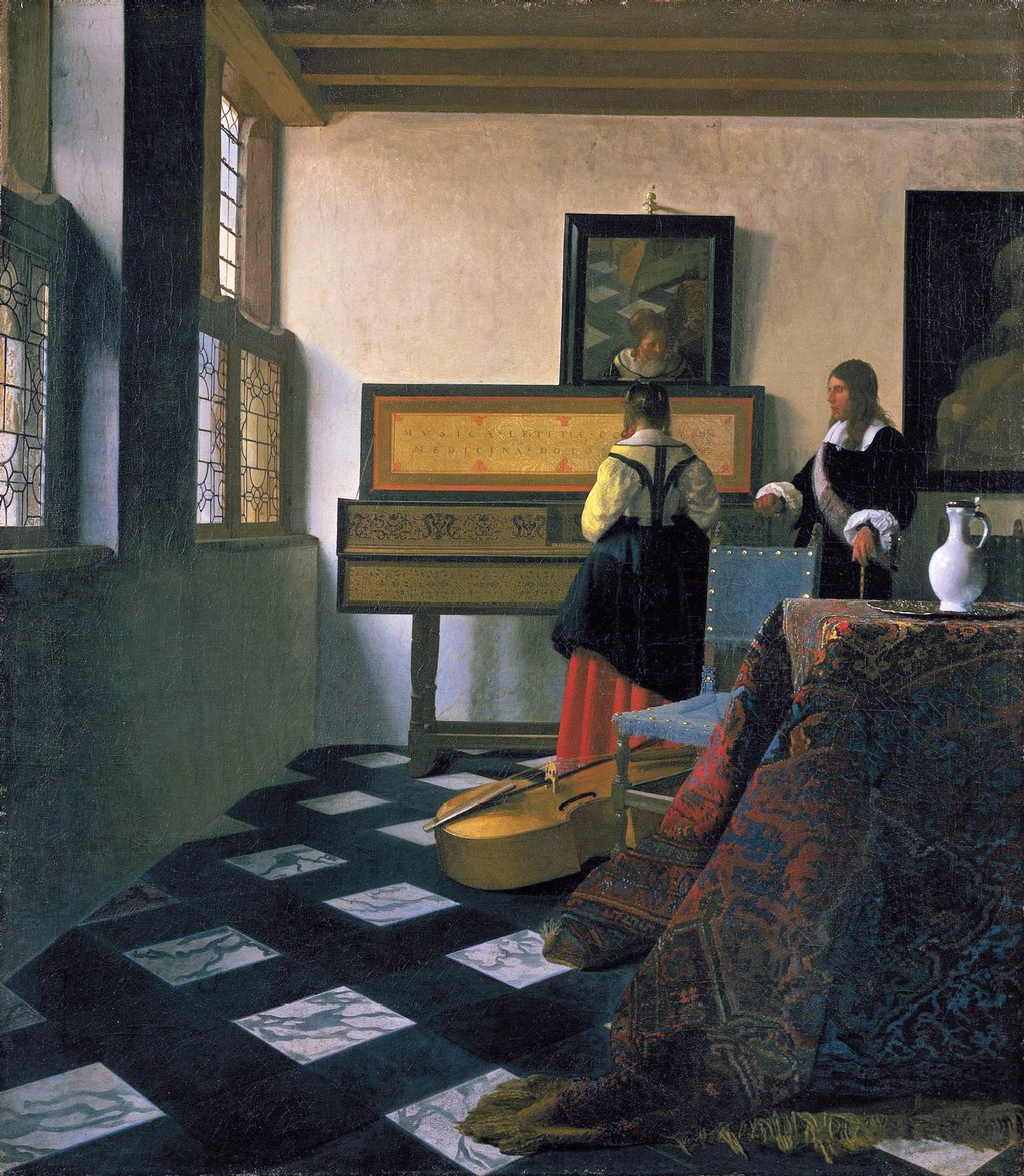Johannes Vermeer - The music lesson 1662-1665
 |
 |
 |
 |
 |
 |
 |

The music lesson. Lady at the Virginals with a Gentleman 1662-1665
73x64cm oil/canvas
Royal Collection, Buckingham Palace, London, UK
The image is only being used for informational and educational purposes
<< Previous G a l l e r y Next >>
From Royal Collection, Buckingham Palace, London:
Paintings by Vermeer - of which there are only thirty-four - are difficult to date and any chronology has to be based on an interpretation of style and complexity of composition. A lady at the virginal was undoubtedly painted during the 1660s, but it is not possible to be more specific although there is at present a consensus of c.1662-4. The composition is characterised by the rigorous use of perspective to draw the eye towards the back of the room where the figures are situated - the young woman rather surprisingly seen from the back. The viewer is at first more aware of the jutting corner of the table, the chair and the bass viol than of the figures themselves, whose privacy is thereby protected. The back of the room, dominated by the virginal comparable with those made by Andreas Ruckers the Elder, is like a grid of verticals and horizontals into which the figures are carefully locked. Light is admitted through the windows on the left and fills the room, casting only soft, subtle shadows. A striking feature of the composition in this part is the mirror on the wall where the slightly blurred reflections include the young woman’s face, part of the table and the legs of an artist’s easel. The implication of this glimpsed easel is that Vermeer shares the same space as the figures he is depicting, but as a result of this artifice he is also, like the viewer, standing outside that space. In fact, as Alpers has observed, Vermeer’s composition is based on exclusion. Many of the elements, particularly at the back of the room, are seen only partially, as though indicating ‘the appearance of the world as ungraspable’.